Transcript of the film lecture by Tom Waibel in the context of the Amos Vogel Atlas #10: Medium as Event.
Let’s begin these remarks on the medium film as a social event by plunging headlong into the film-theoretical reflection of the 1920s, when intellectual debate was faced with the challenge of conceptualizing two major revolutions at once: The social revolution that, starting from the then still relatively young Soviet Union, extended its council republican tentacles throughout Europe, and the aesthetic revolution that the then still relatively young phenomenon of film brought to art and society. So let’s begin these thoughts by diving headlong into that new region of consciousness that Walter Benjamin discovers in cinematic art:
“Among the ruptures of artistic formations, one of the most powerful is film. A new region of consciousness is really emerging with it. […] It [film] has blown up this whole dungeon world [of perception] with the dynamite of tenths of a second, so that now among its widely scattered debris we undertake vast, adventurous journeys.” Walter Benjamin, Reply to Oscar A.H. Schmitz (1927).
The ‘dynamite of tenths of seconds’, with which ‘a new region of consciousness’ could be blasted free, seemed to finally put suitable means into the (proletarian) hands of the new man to get rid of those old chains that all (occidental) epistemology had dragged along with it since its escape from Plato’s cave. For in the question of how knowledge comes about, which cognitive processes are conceivable, how prerequisites for knowledge are justified, and when knowledge results from cognition, it can be stated from an aesthetic perspective that the eye, the gaze, and light have become the preferred media of occidental epistemology. It is thanks to them that visibility and visualization are undoubtedly considered processes of knowledge that allow different views and insights from different angles and perspectives. Such a significant part of epistemological concepts is thought of in terms of the eye, the gaze, and light that a possible axiomatic of cognition appeared for centuries to be determinable by the principles of optics. It was the scientifically circumscribed ray of light that caused reflexes via refractions and scatterings and underwent reflections in order to help the processes of cognition to modulation and performance equally as wave and particle. It was obviously due to the sphere of the visual that the operations of reason and recognition could be looked at, viewed and elucidated by means of eye, gaze and light in order to reach – if not illumination – at least the longed-for enlightenment about oneself…
And now, with the help of the technically reproduceable medium of film, it had become possible for cinema not only to capture this visuallity at will and set it in motion, but also to interrupt it deliberately and to rearrange it completely in terms of time and space. In view of the increasing speed with which we, as contemporaries of an ever more comprehensive digital manipulability of the visual, are pushed into ever new regions of consciousness, let’s first take a temporary, slow-motion deceleration in order to look more closely at the enormous shock effects of film in art and reality. For, according to Benjamin again, a film shot cannot be fixed,
“neither like a painting nor like something real. The course of association of those who look at it is immediately interrupted by its change. This is the basis of the film’s chock effect, which, like every chock effect, wants to be absorbed by increased presence of mind. The film is the art form corresponding to the accentuated danger of life in which today’s people live.” Walter Benjamin, The Work of Art in the Age of Its Technical Reproducibility (1936).
In this art form of “accentuated danger of life”, a film practice develops in the course of the Red Revolution of the 1920s that conceives cinematographic images of the world and their projection as a fabrication of documents that is intended to help social intervention bring about societal change. These activists give themselves the name Kinoki, a neologism they form from the linguistic montage of ‘кино́ ‘ (Russian for cinema) and ‘оку’ (plural of Russian око, literary for eye). The idea of constructed and machinic cinematic eyes is entirely in line with their revolutionary program: they want to merge the agility and flexibility of the human eye with the precision and reproducibility of the cinematic apparatus, and thus take a new look at the world that is finally free of the fictional sentimentalities of the silent dramas of the time. They ask about the interactions of image and document, of fiction and reality, and examine their film images for the possibility of constructing new worlds. For they do not simply want to depict the new society, but to project a new consciousness into the minds of cinema viewers. They understand the cinematic organization as the fabrication of facts, and explain them self-confidently:
“We film facts, organize them and bring them to the consciousness of working people through the screen.” They are convinced that their task is “to explain the world as it is.” Dziga Vertov, Diaries/Workbooks.
Pictorial explanations about the world “as it is” can only be made with the help of cinematic montages, and these montage sequences turn cinema into a production machine of cinematic thoughts.
“Seeing films,” analyzes Amos Vogel, the name giver of this film series, “is a way of thinking,” and the cinematic rendering of thoughts constitutes the irresistible poetry of Kinoki’s works. Let’s watch a film thought in the making, developed in the opening sequence of Odinnadcatyj / The Eleventh Year, a commissioned film commemorating the tenth anniversary of the October Revolution. The Kinokis have transformed the commission into a documentary epic of the electrification of the new world, articulating a cinematic thought that short-circuits the experience of several centuries, and expresses the revolutionary idea of the film as a leitmotif at the very beginning. In the locations we are about to see, a merciless war is currently taking place, as we go to the Donbass and Ukraine, where both Dziga Vertov, the director, and Michael Kaufmann, his cinematographer and brother, come from.
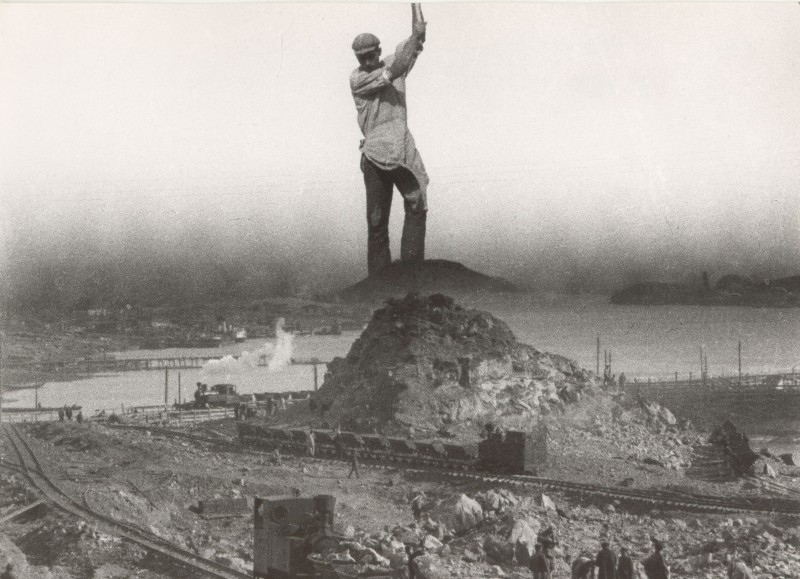
For the planation of a gigantic damming area in the Donbass, mountains are being moved. People are cutting, hammering, picking and pounding chains of hills into small pieces, a huge excavator’s mouth is loading stones onto wagons, filling up waiting freight trains, and the skull of a Scythian skeleton is suddenly grinning in the midst of the unstoppable bustle. On the large socialist construction site, which covers one sixth of the earth, workers are beating stone mountains. One holds the chisel, and others swing massive hammers in rhythmic blows – where they fall, an eon-old time is awakened. The blasters of history chase fountains of sand and stones over an uncovered tomb where a skythe has rested for more than 2,000 years. Alongside splinters, spears and stone points, the Scythe skeleton listens through the black holes of its skull to the noisy dawn of a new time, and Kaufman, the cameraman, turns the lens on the bursting silence.
Here, through multiple exposure and montage, a film idea is constructed as a historical and mythical fact. The construction is historical due to the fact that it makes visible the unleashed electrification of the country as a motor for the beginning industrialization and proletarianization. The fact that the skeletons of a submerged Scythian culture are unearthed at the large-scale construction site of socialism also belongs to the realm of the historical. The mythical dimension finds expression only through the arrangement of the sequence: namely, we are not dealing with an individual encounter with the relics of earlier times, but with an awakening of reliquaries of the past by a powerful, new and collective subject. The bones of a dark and submerged history are blasted with dynamite from the tombs of the earth’s body to make room for the energy urgently needed to accelerate a ‘new man’. With this montage, the mechanical-human cinematic eyes make visible a revolutionary longing, marking at the heart of the desire the site of the class struggle: ‘Forward Bolsheviks! History wake up!’
Cinematic thoughts such as these were brought by the revolution, with the help of cinema trains, to the peasant populations on the outskirts of the vast Soviet republics. But in the end, the engineers of this heavy industrial cinematographic machinery of consciousness were left “quite perplexed” before the “manner of apprehension of the peasants.” It is again Walter Benjamin who describes the surprising state of affairs:
“Having repeatedly learned that serious passages have an irresistibly comic effect on them, and, conversely, that comic ones have a serious effect on them to the point of sentiment, productions have begun to be made especially for those mobile cinemas which occasionally penetrate to the farthest frontiers of Russia to peoples who have never seen either cities or modern means of transportation. To let film and radio have an effect on such collectivities is one of the most splendid experiments in the psychology of peoples now being carried out in the giant laboratory of Russia.” Benjamin, On the State of Russian Cinematography (1927)
Barely 30 years later, the Cuban Revolution was to conduct similar “experiments in people psychology,” but this time with much more modest means. In order to provide remote areas with information, feature films and news about the upcoming fundamental transformation of society, the Cultural Commission of the Rebel Army had founded the Institute of Cinematographic Art and Industry, and sent motorized mobile cinemas with basic equipment on the road: a truck in which two people drive and live, brings newsreels and other film works to distant villages with a projector, screen, loudspeaker, power generator and film cans.
Of course, the primary purpose is to disseminate information in the form of cinematic facts, but a closer look reveals that it is in fact the first encounter with the medium of film that constitutes the real event of the Caribbean traveling cinema tours. Such a precious first time, in which the cinematographic medium becomes a pleasurable event, was captured by Octavio Cortázar in the Sierra Maestra in 1967. Accordingly, let us now see Por primera vez (For the First Time).
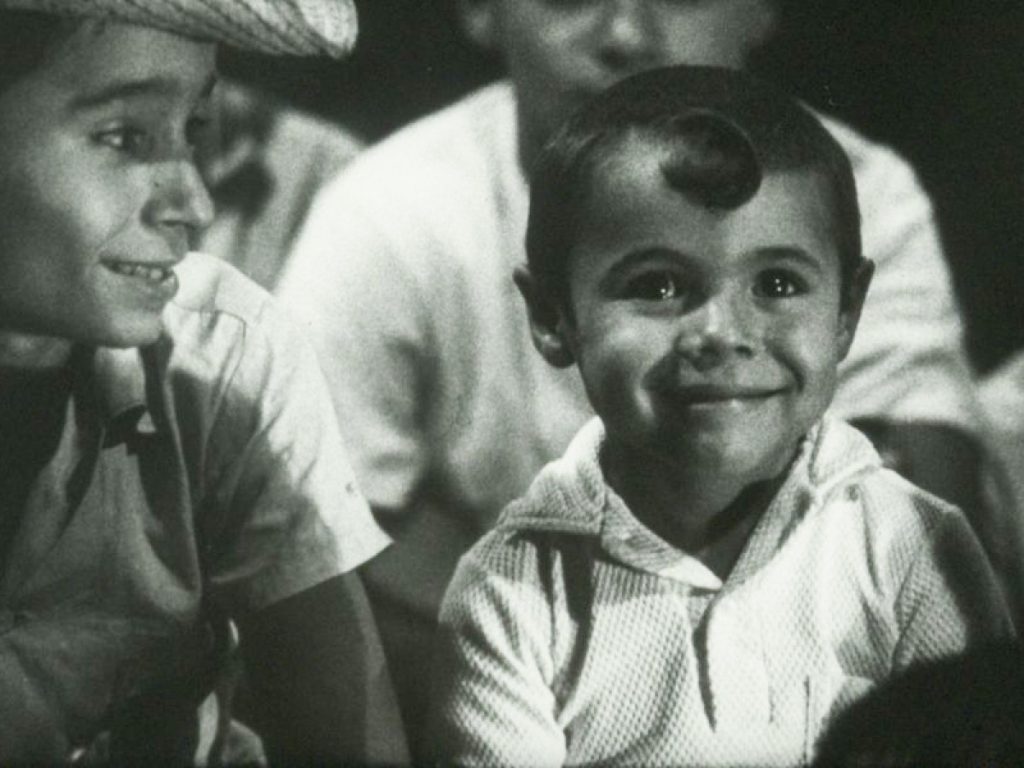
Octavio Cortázar’s documentation of the arrival of a traveling cinema in the Cuban Sierra is conclusive proof that film allows for the production of social events. The utmost attempt at subversion in cinema, which Amos Vogel recognizes in the desire for “film as a tool to change the world,” is realized here light-footedly and touchingly in the becoming-event of the medium itself.
Some 30 years later, in the context of the Zapatista uprising in southeastern Mexico, a handful of people come together to bring the social potential of film as an event to the Lacandon rainforest in the form of an even more modest mobile cinema. More modest because this mobile cinema relies on the medium of video, and more humble also because this handful of people carry their equipment around on their backs to make cinema and to produce events in rebellious areas well away from military checkpoints. These people call their cause Kinoki Lumal, borrowing their first name from the Russian Revolution and taking their last name from the Mayan language Tzeltal. They declare their moving cinema to be the cinema eyes of its territories, and visit marginalized indigenous communities in an area of Zapatista insurgency. And they want to push the imbrication of medium and event even further: Not only the first encounter with cinema is to become an event, but also the work with the medium itself, and that is why recording, editing and montage are also examined for their potential to enable the experience of a media self-empowerment.
Let’s see two documents from the early days of this cinema collective: first Cine Mekapal (Portable Cinema), which captures the arrival of the portable cinema in an indigenous village, and right after that Tallers workshops in different indigenous communities. But I must warn you: these are analog recordings from a video stone age of more than 20 years ago, whose colors have undergone several washes due to the transformation from the American NTSC process (never the same colors) to the European PAL system. So I beg you for some patience.
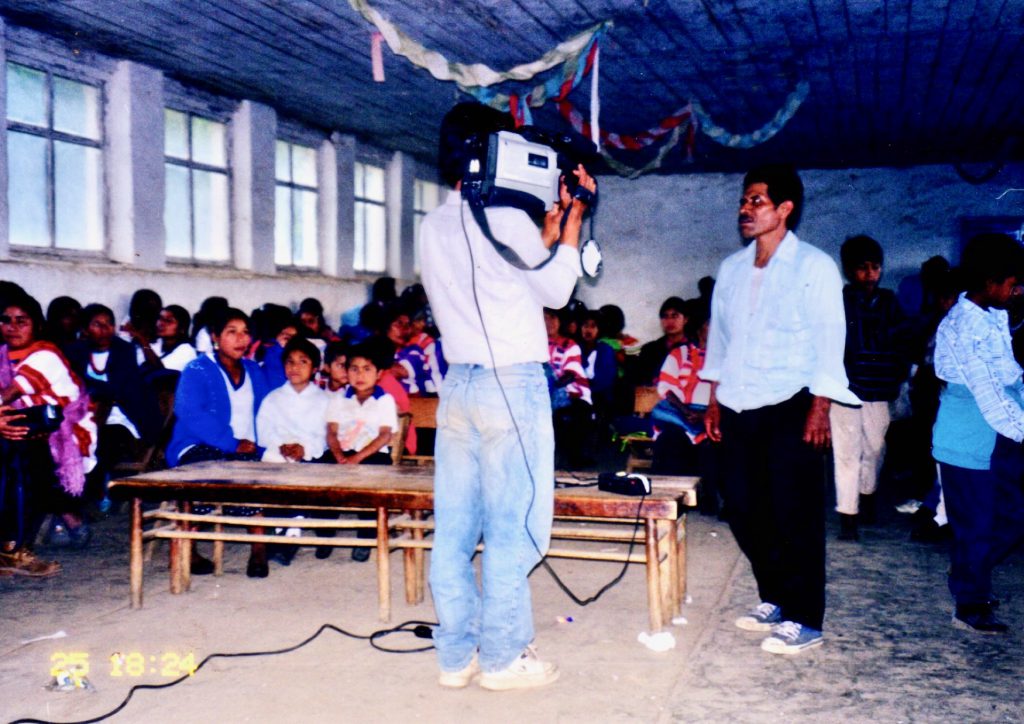
Dee Dee Halleck, the grand dame of the grassroots media movement, explains the connection between representation and subjectivity in her reflections on community media relations like this:
“Struggle in the field of representation is a struggle to have a public existence, a materiality. Those who have the power to name can become actors in history. Representation is therefore the construction of an ‘alter’ reality, the production of subjectivity.” Dee Dee Halleck, Handheld Visions. The impossible possibilities of community media, 2002.
Halleck’s considerations might explain why the indigenous cameramen, whose first encounter with the medium is what we have just seen, were not at all satisfied with the kind of construction of reality and production of subjectivity which these first short films show. Indeed, their image of themselves and their work, and their notion of the imbrication of medium and event, was also to be put at the service of the transmission of indigenous knowledge. Let’s see an excerpt of such knowledge transmission: Joaquin Santiz, who has led many of Kinoki Lumal’s workshops, explains the way the Mayan calendar works in his native language, Tzeltal. The excerpt represents a series of short films produced for the self-understanding of the indigenous population, which have received translations in Tzeltal, Tzotzil or Tojolabal, but have hardly ever been translated into Spanish and never into German. So, for 3 minutes you have the rare opportunity to immerse yourself in the foreign language explanation of a foreign fact.
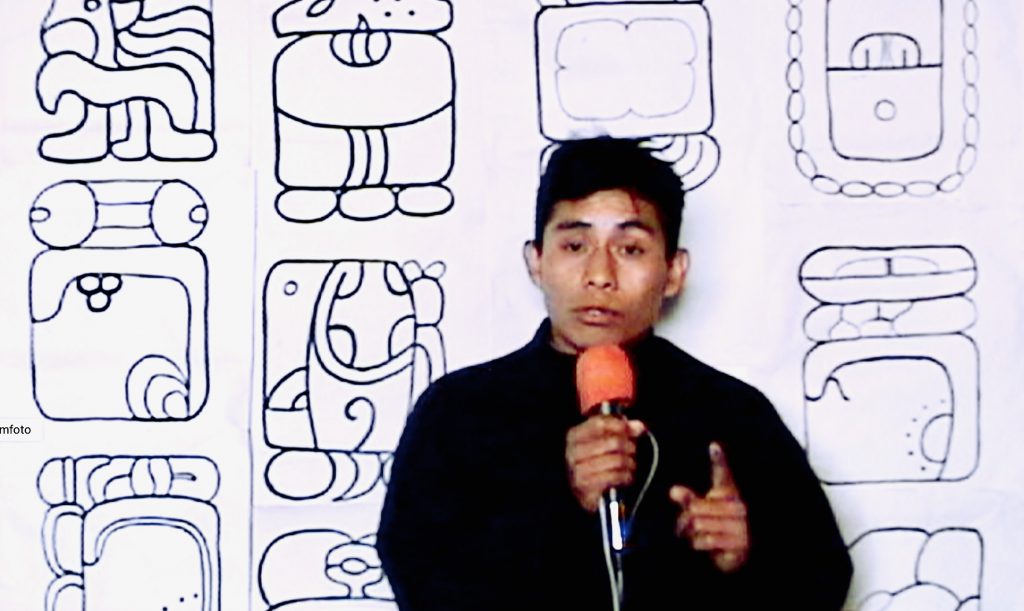
The carefully serious self-presentation is an important step in the direction of media self-empowerment, because it realized that images, signs and statements do not simply represent the world, but also contribute to the happening of possible worlds. Once underway, there is no stopping this media cognition process, and it is not long before the medium is examined for its potential to provoke events. The following 4 minutes show such a provocation: a passport control at the crossing to the insurgent areas turns into the occasion for a rigorous media intervention. Certainly, the resulting short film, which consists of a single uncut shot, shows that the cameramen of the collective have learned their craft, but I personally was still not entirely happy with their media intervention. First, because I was of the opinion that the camera should be used to document transgressions and not to provoke them, and second, because nothing else was at stake in this immigration police control than my own passport.
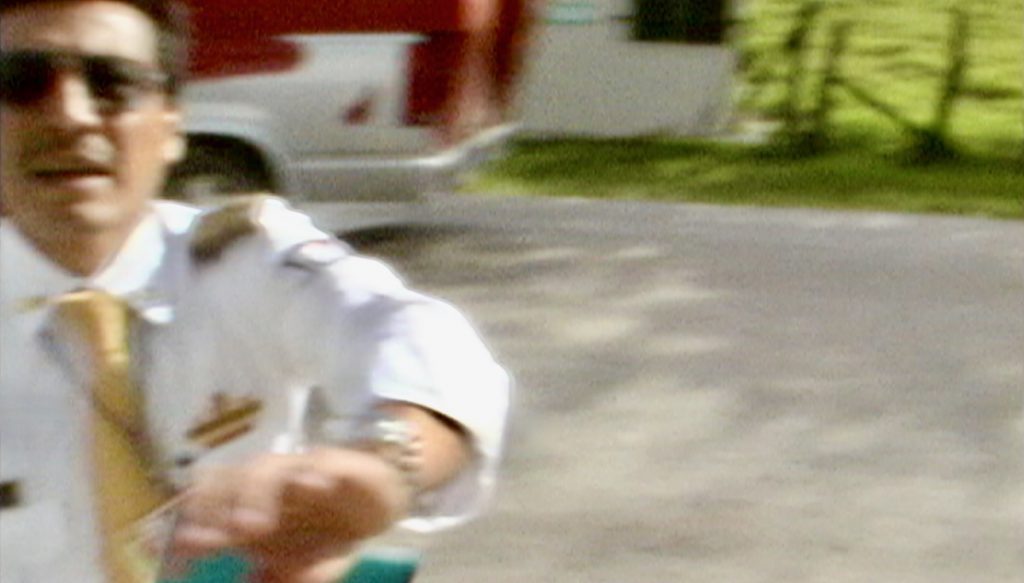
It is obvious that the media’s potential to activate viewers can be accessed most directly when viewers have their say in the medium itself. Shortly before 9/11, the momentous political turning point at the beginning of our century, the Zapatista commanders made a trip through Mexico, and Kinoki Lumal took the opportunity to ask ordinary spectators for their opinions. In the following excerpt from this one-and-a-half-hour inquiry, two aspects in particular become clear: firstly, it is evident that the so-called subalterns can indeed talk, if only they are finally listened to, and secondly, it requires an encounter at eye level in order to create transitions between the documentary medium and the political event.
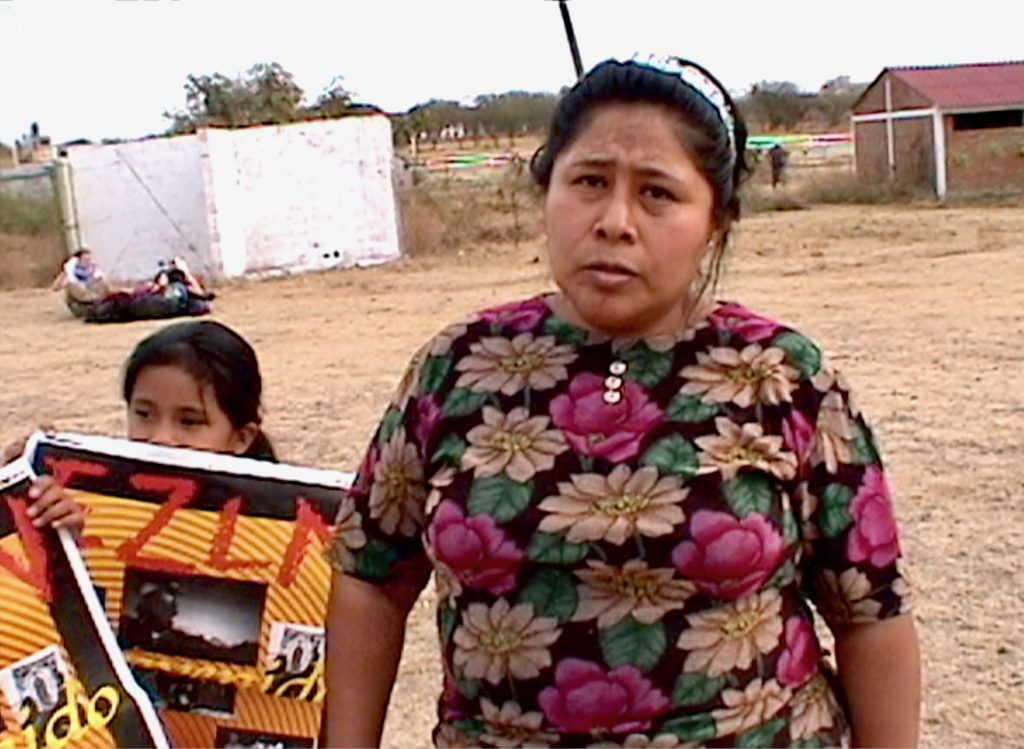
As a conclusion and counterpoint to the thoughts I have had on the possible transitions between medium and event, I want to show you the (quite) pleasurable failure of such a transition. The following short film is an animation called Caracol (Shell). It is the result of a workshop that, by way of introduction to the possibilities of digital imaging, had attempted to explore a wide range of image manipulations in terms of framing, color, and movement in order to deepen the understanding of the fundamental constructedness of any media expression. The occasion for the choice of the titular shell as a motif was the fundamental reconstruction of Zapatista self-organization, which was in the process of reorganizing the autonomous council governments into a multiplicity of so-called caracoles/snails, or shells. But the media collective’s attempt to accompany this political restructuring with an experimental artistic expression failed monumentally. By the time the new, insurgent civil self-government of the Caracoles was publicly announced, the animated cinematic expression Caracol had already faded into oblivion. Please judge for yourself why.

References
Walter Benjamin, Erwiderung an Oscar A.H. Schmitz (1927), in: Gesammelte Schriften, Frankfurt/Main: Suhrkamp 1991, vol. II.1.
Walter Benjamin, Zur Lage der russischen Filmkunst (1927), in: Gesammelte Schriften, Frankfurt/Main: Suhrkamp 1991, vol. II.1.
Walter Benjamin, Das Kunstwerk im Zeitalter seiner technischen Reproduzierbarkeit (1936), in: Gesammelte Schriften, Frankfurt/Main: Suhrkamp 1991, vol. I.
Dee Dee Halleck, Handheld Visions. The impossible possibilities of community media, New York: Fordham University 2002.
Dziga Vertov, in: Thomas Tode und Alexandra Gramatke (ed.), Dziga Vertov, Tagebücher/Arbeitshefte, Konstanz: UVK 2000.
Amos Vogel, Film as a Subversive Art, New York: Random House 1974.
Tom Waibel, Masken des Widerstands. Spiritualität und Politik in Mesoamerika, Wien: Löcker 2022.